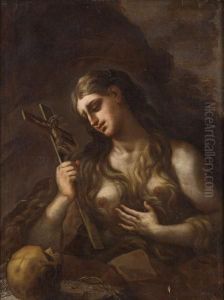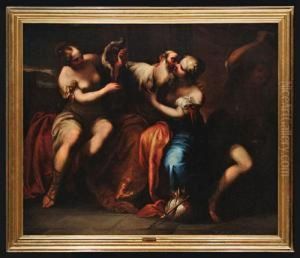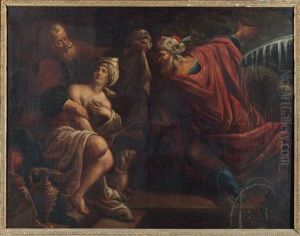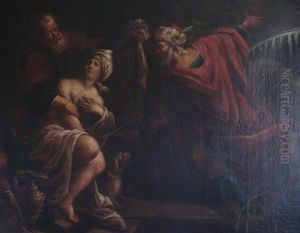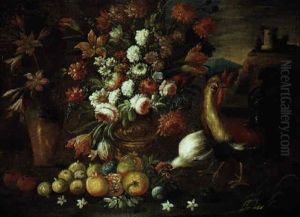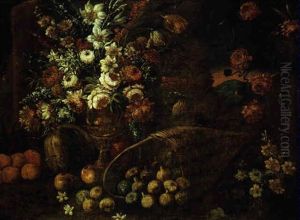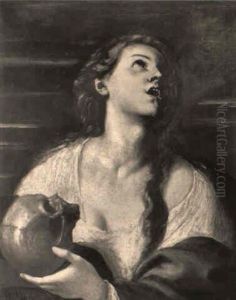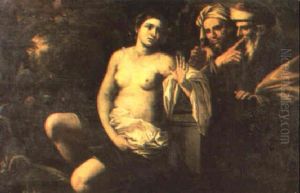Andrea Malinconico Paintings
Andrea Malinconico was an Italian Baroque painter born in Naples in 1635. He emerged as an artist in the midst of the vibrant and competitive art scene of 17th-century Naples, which had become a bustling center for artists following the influx of Caravaggisti and the presence of large workshops such as that of Jusepe de Ribera. Malinconico's work is characterized by its emotional intensity, the dramatic use of chiaroscuro, and a particular sensitivity to color, which suggests the influence of both local and foreign painters who were active in Naples at the time.
Malinconico initially trained under his father, Nicola Malinconico, who was also a painter, before entering the workshop of Massimo Stanzione, one of the leading Neapolitan painters of the day. Stanzione's influence is evident in Andrea's early works, especially in the soft facial features and the use of light. Throughout his career, Andrea developed a style that was distinct within the Neapolitan context, often marked by an elegance in design and a more subdued palette compared to his contemporaries.
Despite his talents, Malinconico never achieved the fame of some of his peers, such as Luca Giordano or Mattia Preti, but he did receive important commissions that have since contributed to his recognition as a noteworthy artist of the Neapolitan Baroque. His works include religious themes, which were typical of the Counter-Reformation period, such as altarpieces for local churches and paintings for private devotion. Examples of his religious works include 'The Martyrdom of St. Bartholomew' and 'The Immaculate Conception with Saints'.
Andrea Malinconico's career was also marked by his role as a teacher. He trained several pupils, thus influencing the subsequent generation of Neapolitan painters. His legacy, while not as prominent as that of his more famous counterparts, remains an important part of the artistic heritage of Naples.
Malinconico's death in 1698 marked the end of his contributions to the Baroque period in Naples. His works, however, continue to be studied and appreciated for their contribution to the rich tapestry of Italian Baroque art, and they can be found in various churches and collections in Italy and beyond.
